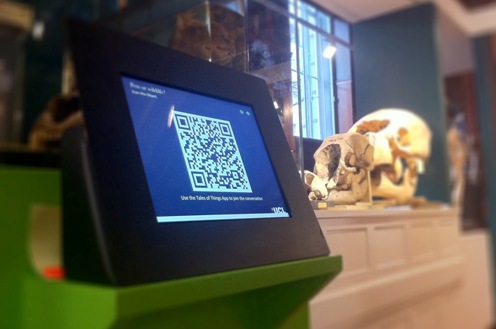QR Codes: useful professional tool or just a gimmick?
29 Jul, 11 | by BMJ
QR codes are becoming more and more prevalent in our daily lives. Now commonly used for digital boarding passes, interactive shop windows and advertisements in newspapers, magazines and billboards, they are appealing to our inherent desire to access further information as quickly as possible.
Notably, rather than remaining the domain of entertainment and retail marketing strategies, QR codes are increasingly used as a serious means of information recall in professional and scholarly circles.
Libraries, museums and academic journals
A number of libraries have introduced QR codes onto their catalogues, allowing readers to scan and download the title, author and location of a book rather than scribbling it down on a piece of paper. Bath University Library has taken this concept even further by adding QR codes to Library Floorplans, linking users directly to an MP3 Audio Tour on a particular Subject Floor.
Museums are using QR codes to enhance user experience via a project called QRator, which encourages visitors to adopt the role of curator. Codes are attached to artefacts and the public is invited to scan the code and enter opinions/comments on iPads, which then become visible to other visitors.
“QRator enables members of the public to type in their thoughts and interpretation of museum objects and click ‘send’. Their interpretation become part of the objects history and ultimately the display itself via the interactive label system to allow the display of comments and information directly next to the artefacts.”
Academic journals are making the logical move of linking their print readers to online content through QR codes instead of printed URLs (often a point of disconnect). In Neurosurgery, this technology is being used to link the reader via Smartphone to related videos, figures or tables that would have previously required a desktop or laptop computer. QR Codes are also printed on Journal of Bone & Joint Surgery articles that have associated online-only commentaries from experts, providing additional context and opinion.
QR codes in BMJ Journals
BMJ Journals is proud to announce the introduction of QR Code technology, linking print readers via Smartphone to related online material.

You will begin to see QR codes appearing in the September issues of our journals in the form of email alert sign up adverts (see above). This will provide a quick and easy way for print readers to register to receive email alerts by simply scanning the QR code and then entering their email address on their Smartphone. Once awareness of this technology has been raised, we will consider linking to other online-only material, including data supplements and educational videos.
Which online content would you like to access when reading a print journal? Let us know – we’d love to hear from you!
For more information on how to use QR codes, watch our QR Code tutorial:
http://www.youtube.com/watch?v=XOxt5kBEZks